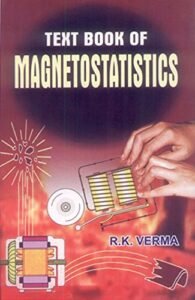TEXT BOOK OF MAGNETOSTATICS

There are number of books on Magnetostatics in the market for the use of degree students in various universities in India. It is the experience of author that the average students need the treatment of theory in a way that should be easily comprehensible to him. Therefore an effort has been made in this book to put the matter in a very lucid and simple way to that even a beginner has no difficulty in grasping the subject. Each chapter of this book contains complete theory and fairly large number of solved examples sufficient problems have also been selected from various universities paper.
Dr. R.K. Verma was the professor of physics at C.C.S. university. After taking M.Sc. (Physics) from N.R.E.C. College Khurja (Meerut University) from first class he joined the physics research laboratory, where he worked for the Ph.D. He have over 20 years of teaching experience both as graduate level and also guiding the students appearing for various competitive examination. He has written numerous books and research papers and is actively involved in guiding research project. Now a days he is working as an educational consultant in S.B.N. educational society.


